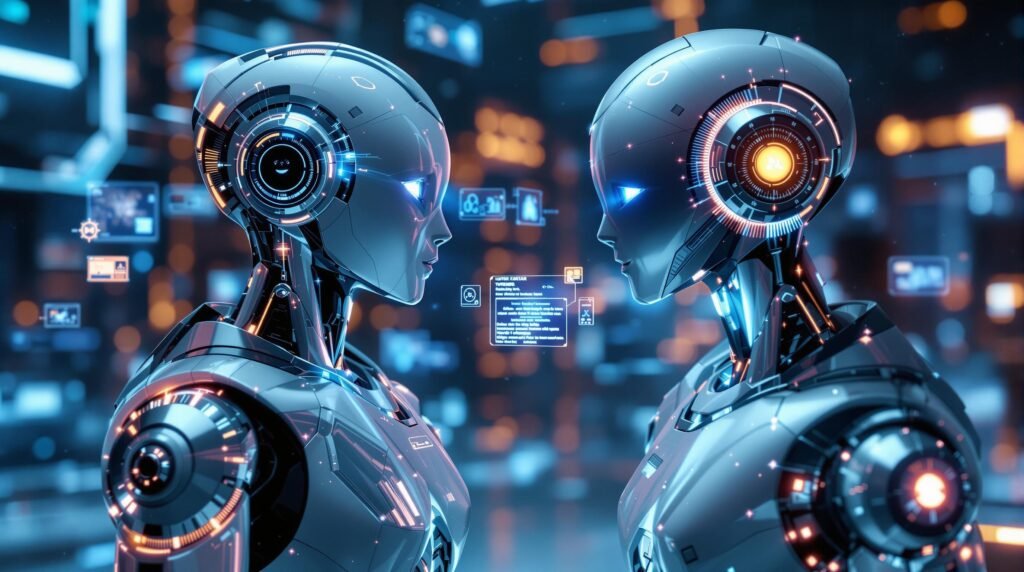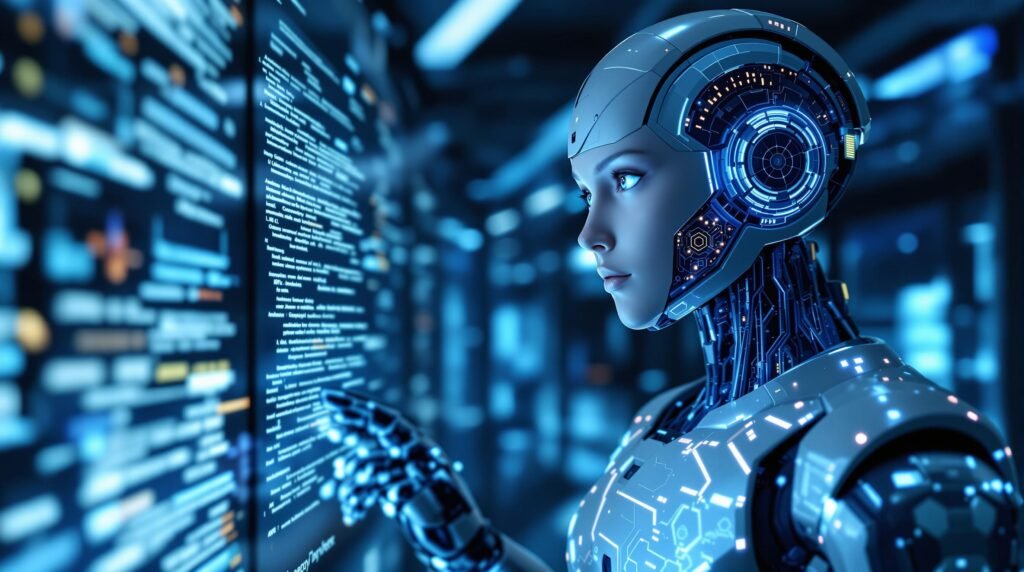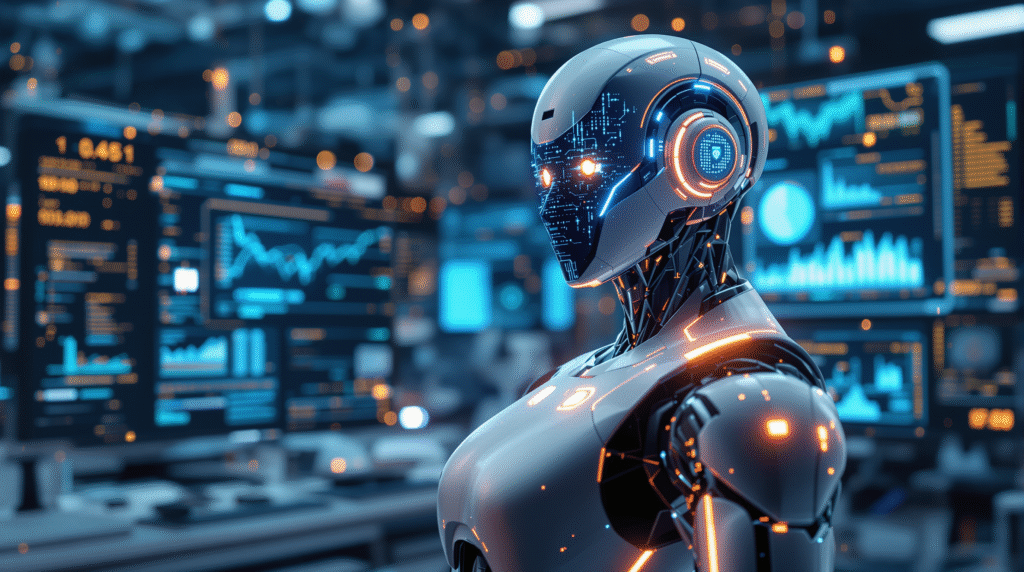Introduction: Modern Communication Powered by AI
The modern digital world increasingly relies on artificial intelligence-based solutions that improve communication between people and technology. Both AI agents and chatbots have become an integral part of many websites, mobile applications, and customer service systems. Thanks to them, companies can respond to user questions faster, automate repetitive tasks, and offer personalized support around the clock.
The development of AI technology has made communication with machines more natural, and users are increasingly unable to distinguish whether they are talking to a human or an intelligent system. However, despite the similarities, chatbots and AI agents differ in scope, level of autonomy, and capabilities. It is worth knowing these differences to consciously choose the best solution for your needs.
What is a Chatbot? Definition, Features, and Common Uses
A chatbot is a computer program designed to conduct conversations with users using text or voice. It most often operates in online messengers, on websites, or in mobile applications. Chatbots can answer questions, provide information, take orders, or help solve simple problems.
The characteristic features of chatbots are:
Speed of response – chatbots respond to user queries immediately, regardless of the time of day.
Automation – they can handle many people simultaneously, relieving customer service employees.
Limited scope of operation – most chatbots operate according to established scenarios and rules, which means they mainly cope with repetitive, simple tasks.
Easy integration – chatbots can be quickly deployed on a website, in an application, or on a social media platform.
The most common uses of chatbots include customer service, providing information about products and services, reservations, surveys, and support in the purchasing process. Thanks to them, companies can improve the quality of service, shorten the waiting time for a response, and increase customer satisfaction.
What is an AI Agent? Capabilities Beyond Simple Conversation
An AI agent is an advanced artificial intelligence system that not only engages in conversations with users but can also make independent decisions, analyze data from various sources, and perform complex tasks. Unlike traditional chatbots, an AI agent can operate in many environments—both virtual and real—and integrate with other systems and devices.
Features of AI agents include:
Autonomy – an AI agent can independently analyze situations and choose the best actions without constant human supervision.
Ability to learn – thanks to machine learning algorithms, the agent can improve its decisions based on new data and experiences.
Multitasking – an AI agent can perform many different tasks simultaneously, such as managing a smart home, analyzing financial data, or assisting the user in daily planning.
Integration with the environment – an AI agent can cooperate with other systems, IoT devices, databases, or mobile applications.
Examples of AI agents include virtual assistants (e.g., Google Assistant, Siri), smart home management systems, autonomous vehicles, or advanced analytics platforms.
Key Differences: Chatbots vs. AI Agents – Autonomy, Complexity, and Scope
Although chatbots and AI agents may seem similar, there are several key differences:
Autonomy: Chatbots usually operate according to predefined scenarios and require supervision or updates from humans. AI agents are more independent—they can learn continuously and make decisions in new, unknown situations.
Complexity: Chatbots are most often simple programs for conducting conversations, while AI agents are advanced systems that can analyze data, plan actions, and carry out complex processes.
Scope of operation: Chatbots focus mainly on text or voice communication. AI agents can perform many different tasks, integrate with other systems, and operate in various environments—from applications to physical devices.
Ability to learn: Most chatbots do not learn from interactions, whereas AI agents can use machine learning to continuously improve their actions.
In summary, chatbots are perfect for simple, repetitive communication tasks, while AI agents are designed for more complex, multi-stage processes and can genuinely support users in everyday life or work.
Use Cases for Chatbots: Customer Service, Information Provision, Basic Automation
Chatbots are widely used in business and services, especially where fast and repetitive communication with customers is important. Here are the most popular chatbot applications:
Customer service – chatbots answer frequently asked questions, help solve simple technical problems, handle complaints, or provide order status updates. This way, customers receive immediate assistance, and companies can relieve their customer service staff.
Information provision – chatbots provide information about products, services, opening hours, locations, or promotions. They can also guide users through the purchasing or booking process.
Basic automation – chatbots can take orders, book appointments, conduct surveys, or collect customer feedback. Automating these processes allows companies to operate faster and more efficiently.
Chatbots are easy to implement and do not require advanced infrastructure. They are effective wherever quick response and handling a large number of inquiries simultaneously are important.
Use Cases for AI Agents: Solving Complex Problems, Personal Assistants
Solving complex problems – AI agents analyze large data sets, predict trends, optimize business processes, or support managerial decisions. Examples include recommendation systems, analytics platforms, or risk management tools.
Personal assistants – AI agents such as Siri, Google Assistant, or Alexa help organize the day, set reminders, search for information, manage calendars, or control smart homes.
Proactive tasks – AI agents can independently initiate actions, such as sending notifications about important events, monitoring device status, predicting failures, or automatically adjusting system settings to user preferences.
Thanks to advanced machine learning algorithms and integration with various systems, AI agents can operate flexibly, autonomously, and effectively, supporting users in everyday and business challenges.
How to Create a Chatbot? Tools, Platforms, and Basic Steps
Creating your own chatbot is easier than ever today, thanks to the availability of many tools and platforms. Here are the basic steps to take:
Define the chatbot’s purpose – consider what your chatbot is supposed to do: customer service, reservations, providing information, or sales support.
Choose a platform – popular tools for creating chatbots include Dialogflow (Google), Microsoft Bot Framework, Chatfuel, ManyChat, or Botpress. Many of them offer ready-made templates and integrations with Messenger, WhatsApp, or a website.
Design conversation scenarios – determine what questions users may ask and what answers the chatbot should provide. You can use simple rules or elements of natural language processing (NLP).
Implement and test the chatbot – use the selected platform to build the bot, and then test it in various scenarios to make sure it works correctly.
Deploy the chatbot and monitor its performance – after deploying it on the website or in the application, regularly analyze conversations and make improvements based on user feedback.
With these steps, you can quickly create a simple chatbot that improves communication with customers and automates repetitive tasks.
How to Build an AI Agent? Advanced Techniques, Machine Learning, and Custom Solutions
Building an AI agent is a more complex process, requiring knowledge of programming, machine learning algorithms, and integration with various systems. Here are the basic steps:
Define the agent’s tasks and environment – determine what problems the agent is supposed to solve and in what environment it will operate (e.g., application, IoT system, analytics platform).
Choose a programming language and tools – Python is most often used, as well as libraries such as TensorFlow, PyTorch, scikit-learn, or OpenAI Gym.
Design the agent’s architecture – divide the agent into modules: perception (data collection), analysis (processing and decision-making), action (executing actions), and learning (optimization based on experience).
Implement machine learning algorithms – use appropriate models (e.g., classifiers, neural networks, reinforcement learning algorithms) to perform the agent’s tasks.
Test, optimize, and integrate the agent – check the agent’s performance in various conditions, optimize performance, and integrate with other systems or devices.
Building an AI agent requires more time and knowledge than creating a chatbot, but it allows for the implementation of much more advanced and flexible solutions that can learn and make decisions independently.
The Future of AI: Hybrid Models and the Convergence of Chatbots and AI Agents
The development of artificial intelligence is causing the line between chatbots and AI agents to blur more and more. Hybrid models are increasingly being created, combining the simplicity and speed of chatbots with the advanced capabilities of AI agents. Such solutions can not only conduct conversations but also analyze data, learn from user interactions, and make decisions independently.
Examples include modern virtual assistants that can both answer questions and manage calendars, control home devices, or anticipate user needs. In the future, we can expect even greater integration—chatbots will increasingly use machine learning algorithms, and AI agents will become more accessible to the average user thanks to simple conversational interfaces.
Conclusion: How to Choose the Best Solution for Your Needs
The choice between a chatbot and an AI agent depends primarily on the needs and expectations of the user or company. Chatbots are perfect for simple, repetitive communication tasks where quick response and handling many inquiries at once are important. AI agents, on the other hand, are ideal for more complex, multi-stage processes that require data analysis, learning, and independent decision-making.
It’s worth remembering that both solutions can complement each other—a chatbot can be the first point of contact, while a more advanced AI agent can handle more difficult cases. The key is to consciously define your goals and choose the technology that best meets your specific challenges.
The AI Agents: The Secret to Developer Efficiency.


